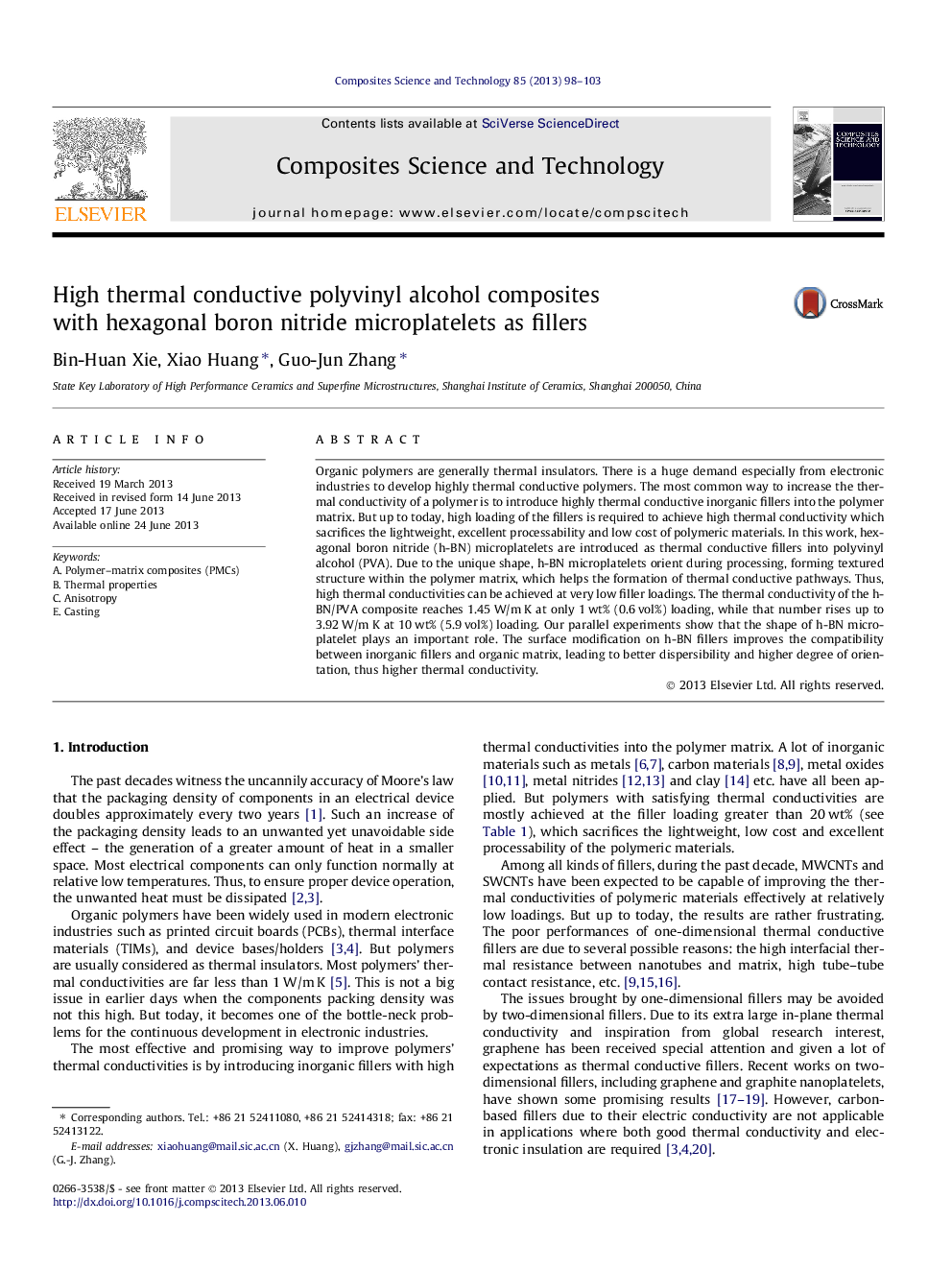| Article ID | Journal | Published Year | Pages | File Type |
|---|---|---|---|---|
| 7215943 | Composites Science and Technology | 2013 | 6 Pages |
Abstract
Organic polymers are generally thermal insulators. There is a huge demand especially from electronic industries to develop highly thermal conductive polymers. The most common way to increase the thermal conductivity of a polymer is to introduce highly thermal conductive inorganic fillers into the polymer matrix. But up to today, high loading of the fillers is required to achieve high thermal conductivity which sacrifices the lightweight, excellent processability and low cost of polymeric materials. In this work, hexagonal boron nitride (h-BN) microplatelets are introduced as thermal conductive fillers into polyvinyl alcohol (PVA). Due to the unique shape, h-BN microplatelets orient during processing, forming textured structure within the polymer matrix, which helps the formation of thermal conductive pathways. Thus, high thermal conductivities can be achieved at very low filler loadings. The thermal conductivity of the h-BN/PVA composite reaches 1.45 W/m K at only 1 wt% (0.6 vol%) loading, while that number rises up to 3.92 W/m K at 10 wt% (5.9 vol%) loading. Our parallel experiments show that the shape of h-BN microplatelet plays an important role. The surface modification on h-BN fillers improves the compatibility between inorganic fillers and organic matrix, leading to better dispersibility and higher degree of orientation, thus higher thermal conductivity.
Related Topics
Physical Sciences and Engineering
Engineering
Engineering (General)
Authors
Bin-Huan Xie, Xiao Huang, Guo-Jun Zhang,
